

USB sticks are the de facto replacement for floppies, now that "legacy" components, including floppy drives and ports, are fast disappearing. Despite their greater size, ZIP disks have not proved a solution, being, like floppy disks themselves, large, clunky and easily damaged. USB sticks are not immune to damage either, but they are small, insensitive to dust, and without moving parts. They won't last forever, in fact, they may last a lot shorter than a quality hard disk since they use flash memory which, like rewritable CDs, can only be changed a number of times before it deteriorates beyond usefulness. The USB memory's controller reallocates sectors as individual cells go bad, and the USB's total size gradually shrinks. Still, the same applies to any floppies used as intensively.
Early USB sticks were wat is deceptively called Hi-Speed (USB 1.1, the slower
version) and came in sizes of 32Kb, 64Kb and 128Kb. Modern USB sticks are USB
2.0, range between 256Kb and 2Gb, and have tricks like retractable plugs,
password programs and portable OS's. Although the general format for USB memory
and flashcard memory in general is FAT or FAT32, the format can be of various
types: superfloppy, hot-swappable hard-drive and even "USB CD-ROM". These types
only matter when plugging in on a non-Windows OS; USB drivers were included from
Windows 98 onwards, although USB wasn't properly supported until Windows
Millennium. (I've tried to build USB support into Windows 95 with various
updates, and failed miserably. But apparently it can be done.) The current
pattern is that every USB drive on the market is supported under WME, and can
work under W98SE with separately downloadable drivers. Of course Windows XP and
upwards have even more USB-related stuff built in, and the day will come when
new USB drives will need separate drivers for all DOS-based Windows versions,
even though, technically, a USB drive can be addressed under simple MS-DOS as
long as the BIOS recognizes it. MacOSX and modern Linux distributions can
recognize all USB sticks I've ever used, although MP3 players in USB-stick
format (which have been moved to the next page) can be a different matter.
| W@LK KEY | Canyon | PEAK | Sony Microvault | Sandisk Cruzer Micro | USB People |
|---|---|---|---|---|---|
| Kingston DataTraveler | PEAK III | PEAK IV | EMTEC | Peak Lite Card Reader |
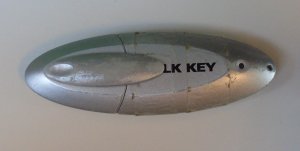
My first ever "pendrive", so called because the cap has a clip like the cap
of a pen, bought cheap (for that time) at 39 guilders at a computer exchange.
Flat and fish-shaped, this model is locally called "duimpje" ("little thumb").
It's flimsy; the plastic is cheap, the cap feels as if one day it will be too
worn to stay on properly, and I put sellotape around the stick itself when it
started to split down the sides. It's small, 128Mb which was one of the larger
sizes available when I bought it, which was okay by me because that's roughly
equal to a 100Mb ZIPdisk, and while it's room enough for text files, it also
means I won't have lost gigs of data if the disk corrupts. It has a teeny tiny
LED and a tiny sticker with the size on it, that's almost worn off. I suspect
its speed is USB 1.1. Being so old, this disk works without problems or special
drivers under WME, MacOSX and Linux (Red Hat, SuSE, Mandrake when it was still
called that) and I think W98SE would have no problems with it, although I
haven't tried.
The next USB stick, though the same size and speed (and bought at the same
value, now in a different currency; 19 euro) is already plumper, sturdier and
more angular, with a more snugly fitting cap. Both clip-top and thumb-shape
were already out of fashion by then, and USB sticks were taking on their current
shape of small, slick lighters. Like the stick before it, this one plugs in
easily under any OS, but unlike the previous one, it can't be plugged into the
Mac's USB keyboard because it draws more power than the keyboard can share.
Interesting! This one too has a tiny LED; in addition it has a switch to "lock"
the drive against write actions (to prevent accidental deletion of data) and a
little sticker with a number (a serial number?) down the side.
My first USB 2.0 stick, for which I had to update a laptop's USB drivers,
it has what I consider the perfect USB-stick shape, narrow and rectangular.
With this model it is possible to do what I've never been able to do with
USB sticks: insert two sticks under each other or side by side. Its cap fits
as snugly as the previous one's, and likewise shows no sign of wear. Its
size is 256 Mb, its case is a kind of brushed aluminium with "www.peak.com"
on it (this is where one is supposed to download additional drivers) and
unlike the others the case is barely scratched, the lettering is still
clearly visible. The LED is right on the bottom, so it can be seen no matter
which way the stick is plugged in (on the Packard Bell laptop, the only way
sticks plug in is upside-down), and right under the ridge where the clip
snaps on if I want to carry it on a neckstrap. Best of all, it
is just an empty stick, uncluttered with software. I've no idea what the
price is, since it was a freebie that came with a magazine subscription.
In my judgement, this is the ideal USB stick. (Later addition: it seems that
the slim sticks, as opposed to the bulky ones, are slower because the
electronics for high-speed transfer won't fit inside. Only using the stick
for archiving, I have no complaints about the transfer speed.)
This stick was bought as part of a laptop deal: I was going to buy a
laptop at a discount, the seller accidentally charged the whole price, and
asked me what I wanted to buy for what would have been the amount discounted.
I asked for a USB stick, the biggest one available please, which was this
sleek, pencil-slim 512Mb stick with retractable plug and USB2.0, of course,
like all USB sticks these days. It cost around 30 euro, probably because of
its "designer" look and the retractable plug trick - no more snapped-off
plugs or lost caps - but as far as I'm concerned, it was too expensive. I
much prefer caps, which offer better protection when one drops one's stick
in, for example, a sink filled with water - strange accidents can happen.
And this plug is drawn in and slides out using a toothed wheel on one side
which also serves as LED; well, it's certainly visible, but it slides inward
as easily as outward, which means one has to hold it firmly and jam a nail in
the wheel when inserting the stick, and it is here that its slender shape - as
thin as the Peak stick, but with rounded edges - becomes a liability. If even
I can't handle this stick comfortably, I hate to think how anyone with bigger
hands would cope. Other than that it works fine, but given the way in which
USB sticks are used, being difficult to plug in is a serious fault. Lastly,
as its name suggests, it comes with software to compress and possibly
password-protect the stick's content - software that I scrubbed off the
stick instantly, as it simply increases the risk of losing data (oops,
forgot password, corrupted byte makes whole archive useless) and my data
are rarely top-secret. (Later addition: the plug will "lock" like the Sandisk
Cruzer Micro if I push the toothed-wheel button while sliding it out, but the
mechanism is weak and won't hold up to something like being plugged in a
laptop. This stick was part of what I now call the
Triple Lemon Deal.)
Like most hardware that's sold by the USA, this stick was made in China, and
bought around the time that that empire is toppling, so maybe the next stick I
buy will also be marked "sold by China"? As a further sign of the times, this
stick has some WinXP crap on it that takes up about 100 Mb. But let's start at
the beginning.
Sized 1 Gb with USB 2.0, with a retractable plug (do any sticks have caps
any more?) and its own neckstrap included, this stick was still cheaper than
the Sony Microvault. This plug doesn't have a wheel, it has a slide with a
kind of "zipper brake" - it slides out but not back in, making the stick
easy to insert. To draw the plug back in, push gently on the slide with a
thumbnail. Perfect. Unfortunately the slide is, again, also the LED. The
stick is said to work under Windows 2000/XP, MacOSX 10.2, and Linux (kernel
version not specified) but no mention of Windows ME, so I looked up the model
at www.sandisk.com and saw that it needs "high-power USB", whatever that means.
To power up this enormous glowing can't-miss-it LED, maybe? That might be
useful for the nearly blind or for stupid consumers who need an urgent
reminder not to pull out the stick during data transfer, but to me it's
like looking into the mouth of an oven. Incidentally, at that same site,
I found a W98SE driver which was "not needed for Windows ME", and the
stick worked perfectly under WME. Is Windows XP already so aggressively
marketed that hardware manufacturers no longer dare to name its predecessor?
Next, this in itself quite satisfactory stick is marred by "U3 tech"
software which works only under Windows NT/XP and pretends to be a portable
OS but in reality only saves user-specific data. Under XP, an unwanted
Cruzer Launchpad appeared in the system tray (fortunately autostart was
off, and the Launchpad can be shut down) and I got a U3 update reminder
screen. Under WME the drive annoyingly reserves two drive letters, one
calling itself "USB CD-ROM", and has to be doubly dismounted.
So I surfed to www.u3.com, to find out if this "USB CD-ROM" is
connected with the firmware or something (it is not) and found the
following advice:
How do I uninstall U3 from my flash drive
I thought it would be enough to just scrub the U3 program files:
Launchpad.exe, and the hidden directories System and Documents. On systems where
Launchpad doesn't start, this "works". (Incidentally, the stick can always be
used as a regular USB flash drive, by simply preventing Launchpad from
starting.) But when I inserted the Launchpad-less stick in a Windows XP
computer, it was suddenly "unformatted" and I'd lost all my data! OK, reality
check: the data are still there, the FAT table is probably largely OK, the
insertion just ruined the boot sector. Not the first time Micro$hit f*cks with
the boot sector, the Windowses love to scent-mark it as their own territory.
Examining the stick under Linux's cfdisk revealed its working, and why it always
reserves a second drive letter under Windowses; it contains three partitions,
two hidden, and the first hidden partition has some more Launchpad-related
software that kicks into action on contact with Windows, especially XP. So to
really get rid of the U3 software, these extra partitions must be erased.
Meanwhile, my lack of expertise in the partition table reconstruction field
means the data on that stick are still inaccessible. (I've bought an identical
stick and copied the partition table and can now see the files again, but the
vast majority are corrupt, especially zipfiles and images. That means the FAT
table took a hammering too. Well, now at least I know which files need
replacing.)
Here's an updated comment: WARNING, CONTAINS MICROSOFT-RELATED MALWARE.
Next stick I buy, I'll disinfect of this kind of software straight away.
And another updated comment: this stick is not handled well by older
(pre-Intel?) Macs and PCs running Windows ME. Ditto any Linux version capable of
mounting USB media. Even after the stick is dismounted, the OS may still access
it, shown by its flashing light. To repeat, even when the stick has been
dismounted, it may be accessed. Pulling it out at such moments results in a
corrupted file or two. It's safest to completely shut down the computer before
removing the stick. Also, on Windows ME, the MP3 player Zinf keeps trying to
access the CD-ROM and producing lots of error messages as WME's KERNEL32.DLL
can't handle Cruzer's Launchpad.
Ever the skinflint due to permanent cashflow problems, I was rummaging
through a "sales" box at a computer shop called Norrods and hit on two
1-Gig USB sticks in the form of little Lego men with orange socks and
T-shirts and a head-shaped cap. Cheap external storage space is always
welcome, and it was only after noticing the football field layout on their
green cardboard container that I realized these were part of the orange
rash that spreads over the Netherlands everytime it seems their football
team might win something. Bleah. Well, at least the sticks went
cheap as part of the slump after our football heroes' glorious defeat, and
before inserting the stick one has to yank the head off. It's the little
pleasures that make life worth it.
That said, I have no idea as to the quality or make of these mass-produced
novelties from, probably, China. I don't even know whether they're USB 2.0.
It says "USB people" on the cardboard box (which I always transport them in
for fear of arms/legs breaking off) and Windows ME identifies them as "CMBR".
Their USB plug is made of white plastic rather than metal, so I suspect they
were not built to last. With their protruding limbs, they're not easy to
carry around or plug in side by side with another stick and so I think they
wouldn't get used for anything besides archival anyway. For which purpose
they are more suited than flat sticks that just lie around, because I can
bend the legs and make them sit.
All USB sticks these days are USB 2.0, have much more capacity than the early
pioneering USB sticks, might just about work under Windows ME although they
might not have drivers for Windows 98, and seem to have some sort of "design".
For the Kingston Traveler series, which seems solid yet well-priced (probably
through absence of annoying superfluous extra software) this means the mostly
white plastic sticks are colour-coded for size: grass-green for 2GB, black for
8GB and aubergine for (biggest stick I've bought to date) 16 GB. Unlike most
modern and therefore retractable sticks, they have caps, plastic ones, which
seem to be sturdy and well-fitting, but time will tell. It is possible to string
these sticks around one's neck. They are wide, but flat, and sit comfortably in
slots above each other, though not side by side. The coloured plastic centres
have "Kingston" embossed in them, and a barely noticeable graphic of a flat head
(the same as the one printed more visibly on the other side with the model name)
which lights up dramatically by way of LED.
Since these sticks are so new, I haven't had data loss or other problems yet.
The wrapping tells me the stick has a 5-year warranty, and also that it is
"Vista Ready", though it doesn't work with "Windows ReadyBoost" (whatever
that is). Other than that, it's said to work with Windows XP (SP1, SP2),
Windows 2000 (SP4), MacOS X 10.3 and Linux kernel 2.6. Tellingly, Windows ME
is absent. They do work under Windows ME.
The latest, aubergine-edged stick of 16GB has a slightly different model
with no visible cap: that's right, it has a slider. This slider is far more
robust than Sony's or PEAK's: slide it out, it stays out. Well done, Kingston!
Well, well! I'm always looking for cheap USB sticks by way of cheap, safe,
barely corruptible backup space, and here were three USB sticks sitting
forgotten in a bag of stuff bought a long time ago together with a dock for the
Junkario. It seems that the PEAK at the top of the page, the comment of which
reads "all sticks should be like this", was PEAK II, and this is the next step.
It's not quite as slim, having a slightly bulging black plastic case with little
"corners" cut into it. The cap has these same two corners sticking out, and
slips onto the back of the stick as easily as the front, so it can be attached
to the plugged-in stick and runs less risk of getting lost. (I found that the
Kingston Data Traveller caps also fit on the backs of their sticks, though less
securely.) And it has a cutout in the case to pass a cord through, and a
triangular LED to show activity on the stick (and warn the user not to pull it
out just yet). Much more capacious than its predecessor, it offers 4GB, which is
great for backups, and has no unwanted software, although the instruction
leaflet that the manufacturer always helpfully includes with the product
"offers" a number of free programs (ie. names them and says where to get them)
that run off USB. This leaflet also tells me the sticks will work under MacOS
8.6 and higher, Windows 98 and upwards (including ME, driver only needed for
W98) and Linux as of kernel 2.4.
The bag of forgotten USB sticks contained two PEAK IV sticks: 2GB and 8GB.
They look exactly the same: broad white slabs with rounded edges and the name of
the shop ("NoRRoD Computers") printed on top. Underneath, they are black and
have a slider. This slider is exactly as flimsy as the slider of the Sony
Microvault, and inserting sticks is as much of a pain, so these sticks are for
long-term file storage so I won't have to use them too often. The black
underside is in fact the top, and when plugged in seemingly on its back, the
slider uncovers a modest blue LED. Apart from this annoying design, they are the
same as the previous PEAKs: no unwanted hardware, informative leaflet (even the
packaging tells of the many potential uses) and works with W98 and upwards,
MacOS 8.6 and higher, and Linux from kernel 2.4.
Oops, found out how to make the plug stay out: push the slider until a click
is heard. This works for the 8GB stick, but not for the flimsier 2GB stick. At
least I found out sooner for this stick than for the Sony MicroVault.
This fat (meaning it may have the necessary electronics for faster transfer)
red stick with its see-through case was found in a supermarket. Never one to say
no to a cheap 2gigs of storage, I bought it and now use it to archive Oberon
Media downloads. Which means it's already filled, as 2gigs really isn't much
these days. It looks sturdy. It's see-through, so if it does stop working one
day, I hope to be able to see why. It has a cap - no annoying sliders. Obviously
a supermarket bargain doesn't come with sheets of specs, but it works nicely,
and agreeably quickly, under Windows ME, Windows 7 and Linux with kernel 2.6.
The latter doesn't mount it under its own brand name, the way it does with the
Kingston sticks, but simply calls it "USB DISK 2.0".
I found two of the green model later. They were going cheap, probably because
they were small by modern standards and USB 2.0 is fast going out of style.
Advantages over the red stick are the size - they fit both above each other and
side by side - and the bigger opening to thread a chain through. Linux also
simply mounts them as "USB DISK". For the rest, they work the same.
None of the sticks listed so far are faster than USB2, and this handy gadget
that was deemed lost until it popped out of a box again, is no exception.
Comparable to the PEAK sticks above, its package tells me it will work under
Windows from 98SE (driver available from the site, although I'm not sure that
site lists those drivers any more) to Vista, and Mac OS9 or higher. It also
supports Windows Vista ReadyBoost, whatever that is, and can be used 10,000
times, which I assume refers to how often I can push in and pull out SD cards
before the plating on the contacts wears down too far. The only card I intend to
use this for is the 4gig SDHC card in the Canon
PowerShot A495. This camera connects to a PC with a microUSB-to-USB cable
which I've left, erm, somewhere, but plugging it into the camera requires
opening a flimsy plastic cover and installing unnecessary
only-works-under-Windows download software, so I just pop out the memory card.
Now the Acer laptop has a card slot, but inserting
the card is fiddly and will wear down the slot, which would cost much to
replace. Whereas with this solution, I'd only have to buy a new card reader.
Canyon
Comment: No problems with this one
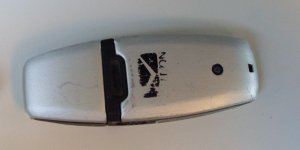
PEAK
Comment: All sticks should be like this
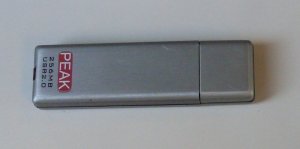
Sony Microvault
Comment: Annoying design, useless software
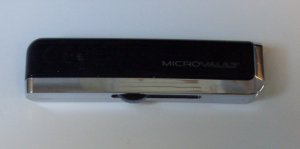
Sandisk Cruzer Micro
Comment: Windows XP software, grr...
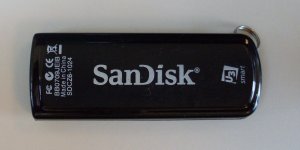
Most U3 smart drives come with an uninstall utility that converts the U3
smart drive into a regular USB flash drive. This utility can be accessed from
the U3 Launchpad. Open the U3 Launchpad and click on Settings, then select U3
Launchpad Settings and click on the Uninstall tab. Some devices have a link to
the Uninstall utility under Help and Support.
USB People
Comment: Novelty stick
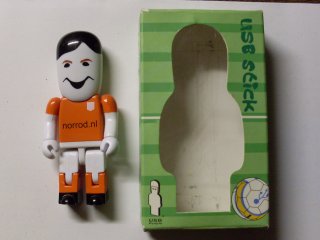
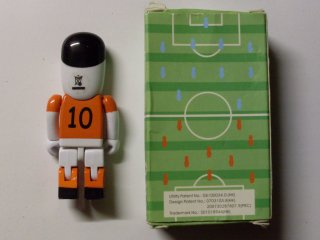
Kingston DataTraveler
Comment: No complaints yet
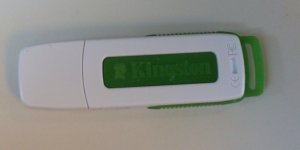
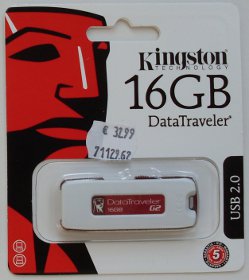
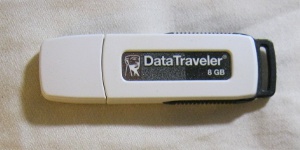
PEAK III
Comment: Looks spiffy
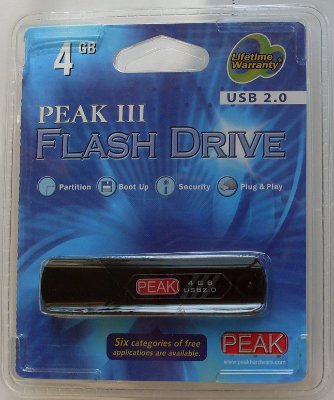
PEAK IV
Comment: Not that horrible slider again
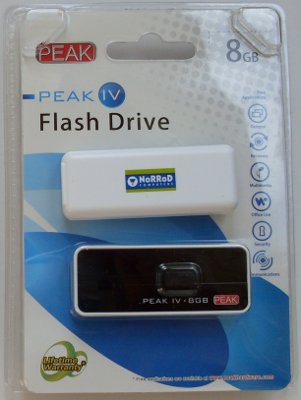
EMTEC
Comment: Nice cheap see-through archive space
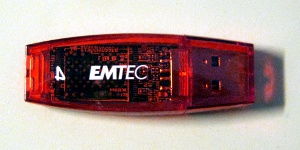
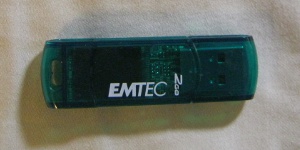
Peak Lite Card Reader
Comment: Saves wear on the card slot


